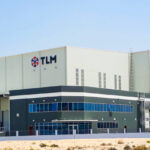In an increasingly interconnected world, mastering the art of network management is essential for businesses and individuals alike. A well-managed network can enhance productivity, security, and overall user experience. To achieve this, it’s crucial to follow best practices from a TLM Dubai that can help you optimize your network.
Understanding network topology:
Network topology refers to the arrangement of devices and connections in a network. Understanding the topology of your network is the foundation of effective management. Whether it’s a star, bus, mesh, or any other configuration, knowing how devices are interconnected allows you to plan for scalability and troubleshoot more effectively.
Implementing robust security measures:
Network security is paramount in an era of ever-increasing cyber threats. Employing a multi-layered security approach, which includes firewalls, intrusion detection systems, and regular software updates, is essential. Moreover, educating users about safe online practices can further bolster network security.
Regular monitoring and performance optimization:
Continuous monitoring of your network’s performance is vital. Utilize network monitoring tools to track bandwidth usage, detect anomalies, and proactively address issues. Regularly optimizing your network, such as adjusting QoS settings, can ensure that critical applications receive priority, improving overall performance.
Scalability and redundancy planning:
Networks should be designed with scalability in mind. As your organization grows, your network should easily accommodate new devices and increased traffic. Additionally, redundancy planning is crucial to maintain network uptime. Redundant paths and failover systems can prevent network disruptions.
Segmentation for enhanced security:
Network segmentation involves dividing your network into smaller subnetworks. This enhances security by isolating sensitive data and reducing the attack surface. For instance, you can separate guest networks from internal networks to prevent unauthorized access to critical resources.
Documentation and change management:
Maintaining accurate documentation of your network’s configuration and changes is often overlooked but is critical for efficient management. When a network issue arises, having documentation simplifies troubleshooting. Implement change management procedures to ensure that all network modifications are well-documented and properly tested.
Disaster recovery planning:
No network is immune to disasters, whether natural or digital. Create a comprehensive disaster recovery plan that includes regular data backups, offsite storage, and procedures for restoring services in case of a catastrophe.












